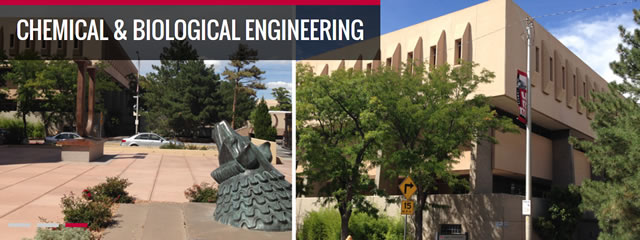
Chemical and Biological Engineering ETDs
Publication Date
11-18-2009
Abstract
Faced with the complexity of diseases such as cancer which has 1012 mutations, altering gene expression, and disrupting regulatory networks, there has been a paradigm shift in the biological sciences and what has emerged is a much more quantitative field of biology. Mathematical modeling can aid in biological discovery with the development of predictive models that provide future direction for experimentalist. In this work, I have contributed to the development of novel computational approaches which explore mechanisms of receptor aggregation and predict the effects of downstream signaling. The coupled spatial non-spatial simulation algorithm, CSNSA is a tool that I took part in developing, which implements a spatial kinetic Monte Carlo for capturing receptor interactions on the cell membrane with Gillespies stochastic simulation algorithm, SSA, for temporal cytosolic interactions. Using this framework we determine that receptor clustering significantly enhances downstream signaling. In the next study the goal was to understand mechanisms of clustering. Cytoskeletal interactions with mobile proteins are known to hinder diffusion. Using a Monte Carlo approach we simulate these interactions, determining at what cytoskeletal distribution and receptor concentration optimal clustering occurs and when it is inhibited. We investigate oligomerization induced trapping to determine mechanisms of clustering, and our results show that the cytoskeletal interactions lead to receptor clustering. After exploring the mechanisms of clustering we determine how receptor aggregation effects downstream signaling. We further proceed by implementing the adaptively coarse grained Monte Carlo, ACGMC to determine if 'receptor-sharing' occurs when receptors are clustered. In our proposed 'receptor-sharing' mechanism a cytosolic species binds with a receptor then disassociates and rebinds a neighboring receptor. We tested our hypothesis using a novel computational approach, the ACGMC, an algorithm which enables the spatial temporal evolution of the system in three dimensions by using a coarse graining approach. In this framework we are modeling EGFR reaction-diffusion events on the plasma membrane while capturing the spatial-temporal dynamics of proteins in the cytosol. From this framework we observe 'receptor-sharing' which may be an important mechanism in the regulation and overall efficiency of signal transduction. In summary, I have helped to develop predictive computational tools that take systems biology in a new direction.'
Keywords
Monte Carlo, EGFR, Spatial Modeling, Receptor-sharing; Cellular signal transduction--Computer simulation, Cell receptors--Computer simulation., Tumor proteins--Receptors--Computer simulation, Epidermal growth factor--Receptors--Computer simulation, Monte Carlo method
Sponsors
National Science Foundation
Document Type
Dissertation
Language
English
Degree Name
Chemical Engineering
Level of Degree
Doctoral
Department Name
Chemical and Biological Engineering
First Committee Member (Chair)
Petsev, Dimiter
Second Committee Member
Embid, Pedro
Third Committee Member
May, Elebeoba
Recommended Citation
Costa, Michelle. "Unraveling the intricacies of spatial organization of the ErbB receptors and downstream signaling pathways." (2009). https://digitalrepository.unm.edu/cbe_etds/31


